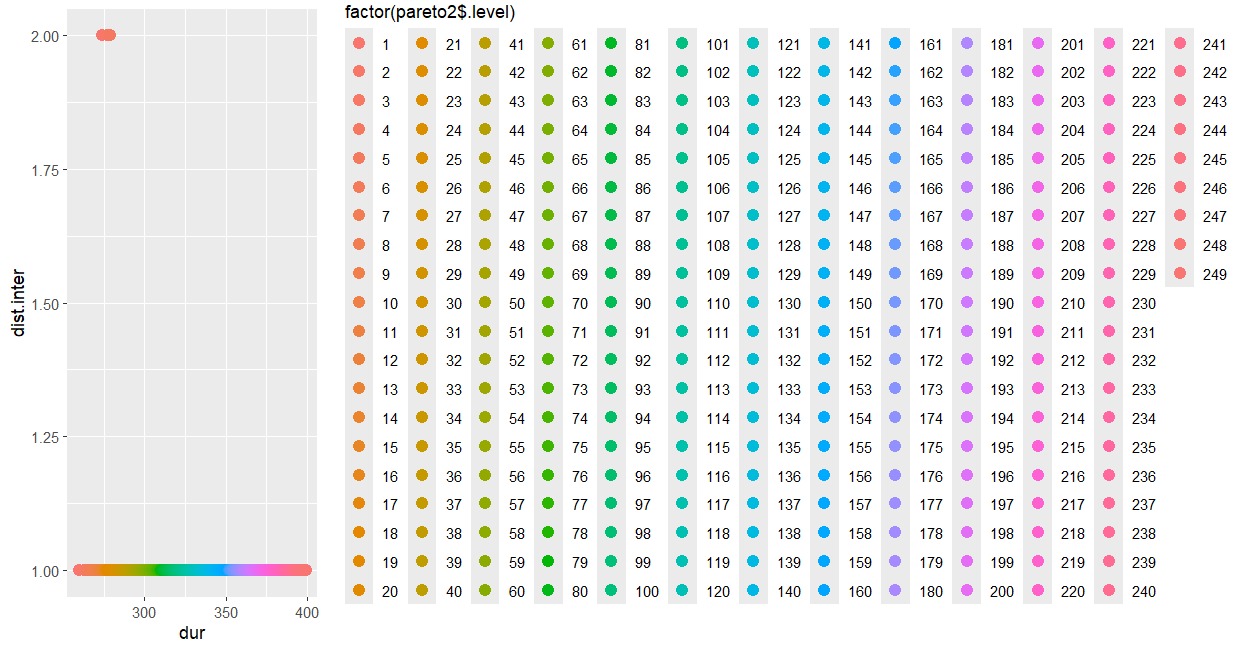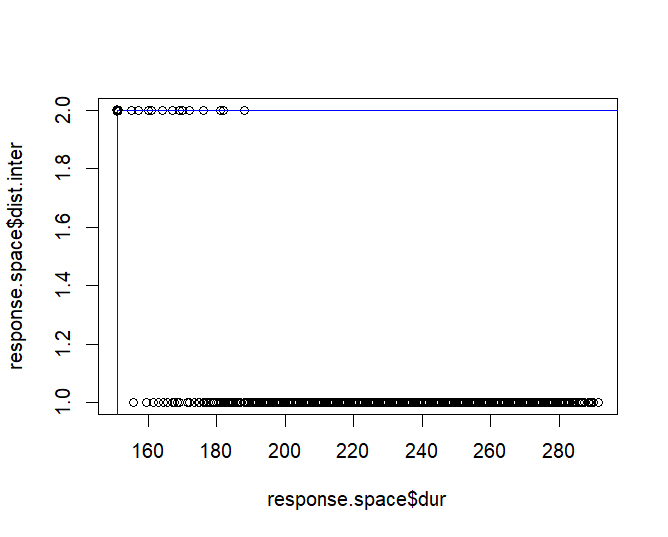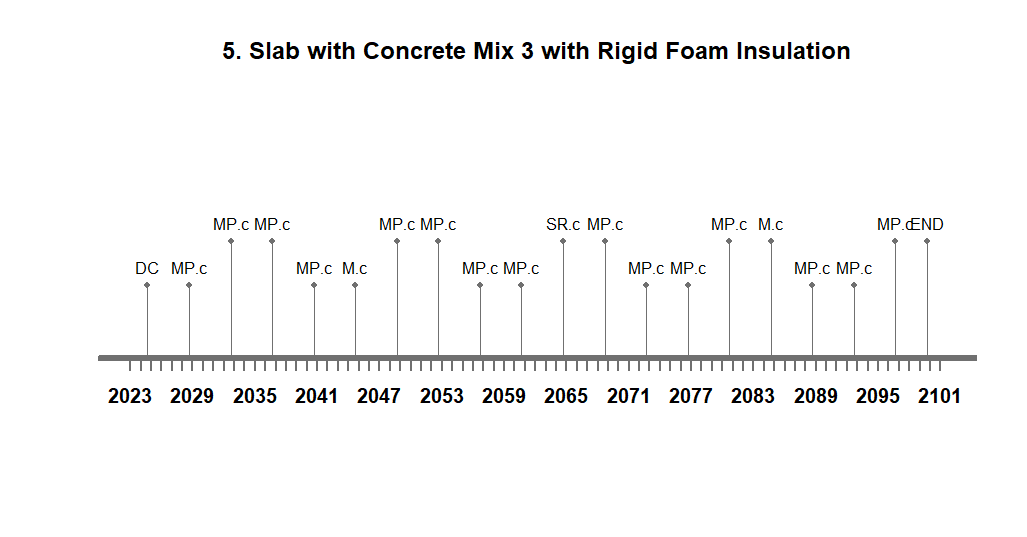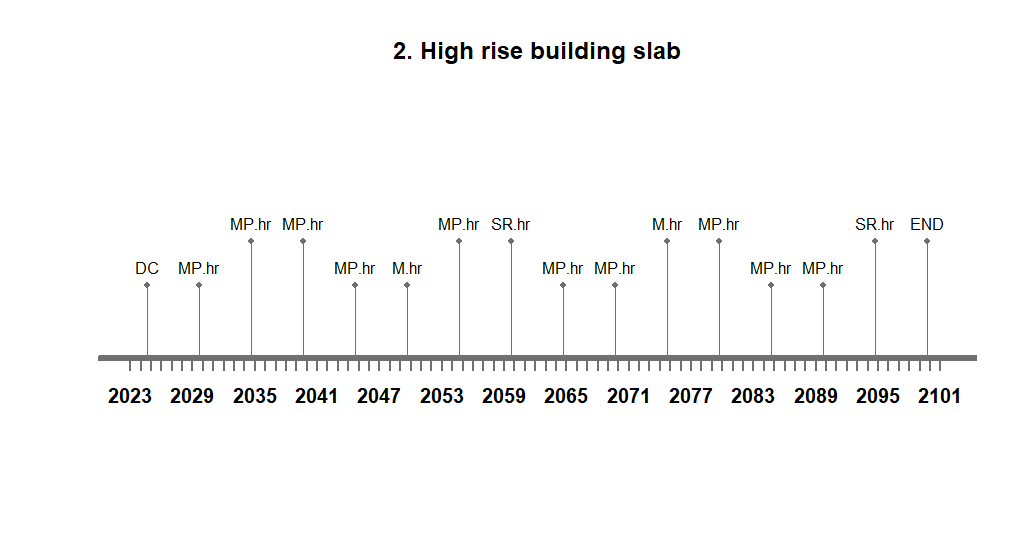Based on the integration concept and interactions between the systems, it is evident that proper maintenance strategies are essential for the smooth functioning of the entire facility. For each system, we have initially considered different intervention scenarios as mentioned. As per our discussion, we have decided on three maintenance
Table no.1
Table no.1 shows the frequency of interventions of each system. For the lifecycle analysis of the integrated system lifetime value of 100 years is considered.
Integrated maintenance planning
This part of the analysis focuses on overlapping maintenance activities within subsystems to reduce the total number of intervention days and maximise the distance between consecutive interventions over the system’s lifespan. To achieve this, we consider that each maintenance task for a subsystem has a designated time frame within which it can be performed, along with a specific duration required for completion. The following Figure 1 the total intervention duration is 357 days.
![]() Figure 1
Figure 1
The above figures show intervention interruptions of each system.
Alternative 1: Integrated Facility Maintenance Scheduling
This approach optimizes maintenance actions across all facility systems, ensuring that interventions are grouped efficiently to minimize disruptions and maximize resource utilization. Instead of handling each building’s maintenance separately, activities are planned as a coordinated effort.
Classroom infrastructure maintenance (HVAC systems, lighting, and IT services) is scheduled to overlap with workshop technical inspections, ensuring both learning spaces remain functional with minimal downtime. Security system updates, plumbing repairs, and electrical servicing in dormitories are synchronized with administrative building maintenance, reducing redundant resource allocation. Electrical, internet, and water supply checks for the entire campus are conducted in a single intervention period, ensuring service continuity without multiple disruptions.
By integrating these maintenance tasks, the total number of intervention days across all systems can be significantly reduced.
Alternative 2: Combined Structural and Infrastructure Maintenance
This strategy focuses on structural and infrastructural upgrades, including major repairs and renovations. By synchronizing interventions across the educational facility, maintenance efficiency is optimized while reducing the impact on daily operations:
Major renovations, such as roof repairs, foundation reinforcements, and external facades of the educational, workshop, and residential buildings, are performed coherently. This approach reduces the need for multiple scaffolding setups and contractor mobilizations. Road resurfacing and pathway accessibility improvements are scheduled alongside infrastructure maintenance, ensuring uninterrupted mobility across the campus while minimizing disruptions. The power grid, water pipelines, and IT networks undergo upgrades within the same timeframe, ensuring all essential services remain functional without separate intervention periods.
Both strategies emphasize coordinated maintenance planning to optimize interventions. While Alternative 1 focuses on routine and preventive maintenance with minimal disruption, Alternative 2 consolidates major renovations and infrastructure upgrades for long-term resilience.
Optimizing Maintenance Scheduling Strategies
This study aims to demonstrate how various maintenance scheduling approaches influence the overall duration of maintenance while enhancing efficiency and minimizing disruptions. To illustrate this, the Figure below presents a plot that visualizes the relationship between maintenance duration (dur) and discrete intervention levels (dist.inter).

Figure 6
Figure 6 presents 247 maintenance scheduling combinations, optimizing duration and intervals between interventions. Each scenario is classified into three levels:
- Level 1: Frequent, short-duration maintenance with minimal coordination.
- Level 2: Highly consolidated schedules minimizing disruptions
To identify the most effective strategy, Figure 7 applies Pareto frontier analysis, emphasizing reduced maintenance time and maximized intervals, ensuring efficiency and minimal resident disruption.

Figure 7




